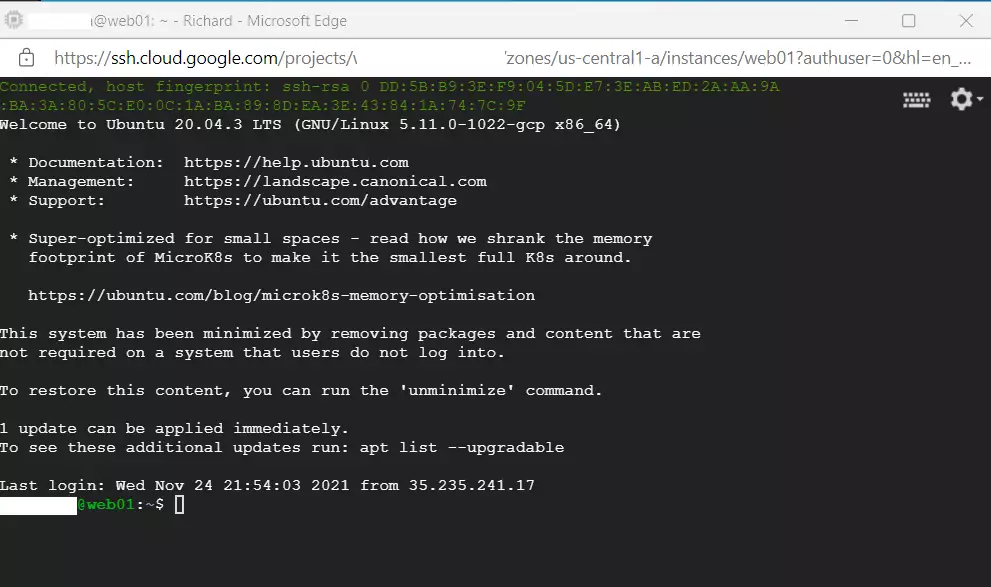This post shows students and new users steps to install Nextcloud on Google Cloud servers running Ubuntu Linux.
We have gone through a series of posts, starting with registering a domain name, setting up a Google Cloud server, and installing software and packages to help us build our cloud storage service similar to Dropbox and OneDrive.
We’re now ready to install Nextcloud to help us build our first dynamic, efficient, and enterprise-ready cloud storage service and begin managing our files and sharing our content everywhere.
Nextcloud is an open-source, self-hosted file sync and file-sharing platform similar to Dropbox, OneDrive, and other proprietary online storage services. Written in PHP, it has all the features you need to create your cloud and sync services and can be paired with a MySQL or MariaDB database.
With Nextcloud, one can create their cloud and sync storage service on their server hosted locally or in the cloud, using free templates, plugins, and a support base to help you throughout the process.
This is the seventh post in this series, which can be used as a beginner’s guide to learning how to create a website domain, set up a Google Cloud server with Ubuntu Linux, and install software and packages to build and run a website online.
In this series:
- How to create a website domain
- How to set up a Google Cloud server with Ubuntu Linux
- How to install Apache on a Google Cloud server (alternative to Nginx)
- How to install Nginx on Google Cloud server (alternative to Apache)
- How to install PHP on a Google Cloud server
- How to install MySQL or MariaDB database server
Now that you’ve learned how to create a website domain, set up a Google Cloud server, and install Apache, Nginx, PHP, MySQL, or MariaDB, you can continue below to tie it all together with Nextcloud.
When we started this series, we said a web server allows content to be published and served to web clients and audiences browsing your website. A PHP or server-side scripting language allows for a dynamic and more functional website. A database server will enable you to store your website content efficiently.
Other software and packages may also be needed to enhance the functionality of a website. Below, we’ll show you how to install these tools with Nextcloud.
In our first post, we also said that it can’t be used after creating a domain name until it is forwarded or pointed to a server. The second post showed you how to point a domain to a server we created. Then we showed you how to install software and packages to help us run personal cloud storage service.
We’re ready to connect to our Google Cloud server and install Nextcloud by tying the software and packages installed in our previous posts.
How to connect to Google Cloud servers
Google Cloud server (Compute Engine) allows users to connect using SSH from the browser window to their virtual machine (VM) instance within the Google Cloud Console.
SSH from the browser supports the following:
- Web browsers
- The latest version of Google Chrome
- Firefox
- Microsoft Edge
- Microsoft Internet Explorer 11 and later
- Safari 8 and later. Note that Safari is not supported in private browser mode.
- Virtual machine configurations
- All Linux VM images are natively available in Google Cloud.
No additional software or browser extensions are needed. Simply login to Google Cloud Console and go to Menu ==> Compute Engine ==> VM instances.
In the list of virtual machine instances, click SSH in the row of the instance that you want to connect to.

Alternatively, you can open an SSH connection to an instance by clicking its name and SSH from the instance details page.
An SSH terminal window with the Ubuntu Linux instance created in the series’s second post will open.
You should now be able to run commands in Ubuntu Linux created on the Google Cloud server.

Install Nextcloud on Google Cloud Servers
Installing and managing a Nextcloud website on Ubuntu Linux is no different, whether on Google Cloud servers or a local VM instance.
Once you have installed all required packages, Nextcloud can be set up directly from your browser by browsing the server hostname or IP address.
Below is a detailed post to help you install Nextcloud on Ubuntu Linux with Apache or Nginx. Click on it to learn more about installing and managing Nextcloud on Ubuntu Linux.
How to install Nextcloud on Ubuntu Linux with Apache
How to install Nextcloud on Ubuntu Linux with Nginx
Each link above will show you all the steps we performed in our previous posts to get here. You also will learn how to secure your Nextcloud website with free Let’s Encrypt SSL certificates.
Following the links above and performing all the steps, you can create an online store using Nextcloud.
Conclusion:
Following the steps outlined in this guide, you can successfully install and manage Nextcloud on your Google Cloud server running Ubuntu Linux. Here are the key takeaways:
- Nextcloud is a powerful, open-source cloud storage solution that can be hosted on your server.
- The installation process can be quickly completed through your web browser once your server and required packages are set up.
- Comprehensive resources are available to guide you through the installation of Nextcloud using both Apache and Nginx.
- Securing your Nextcloud instance with Let’s Encrypt SSL certificates ensures your data remains safe during transfer.
- With your Nextcloud server up and running, you can begin managing and sharing your files, providing a dynamic, private cloud storage experience.
With these steps complete, you can confidently utilize Nextcloud to meet your cloud storage needs.

Leave a Reply Cancel reply